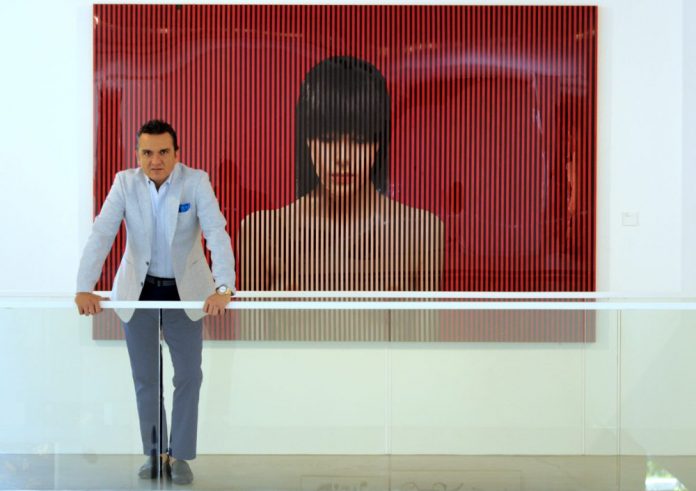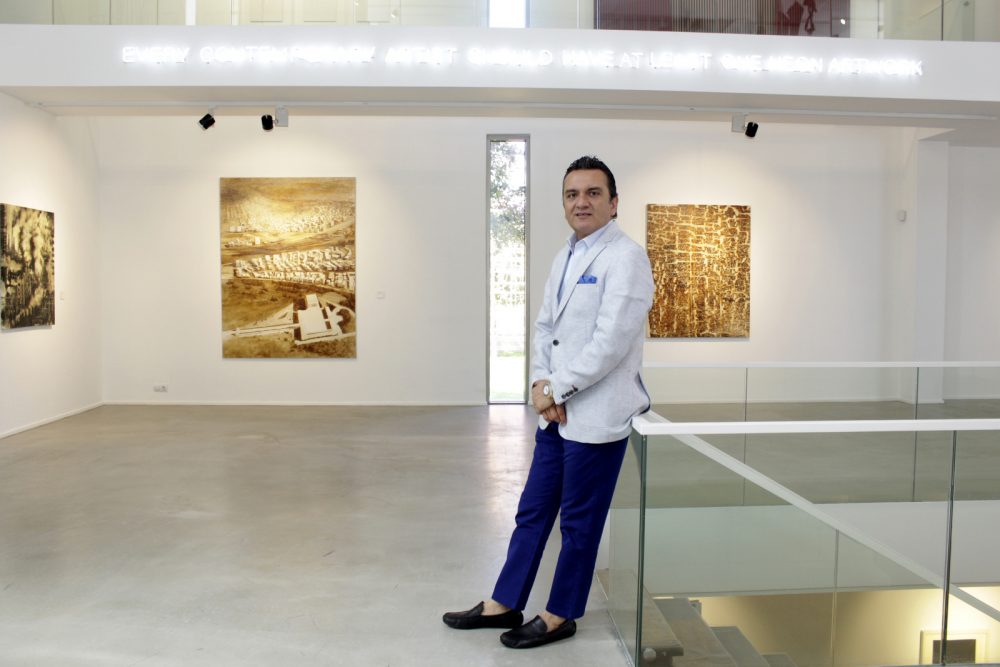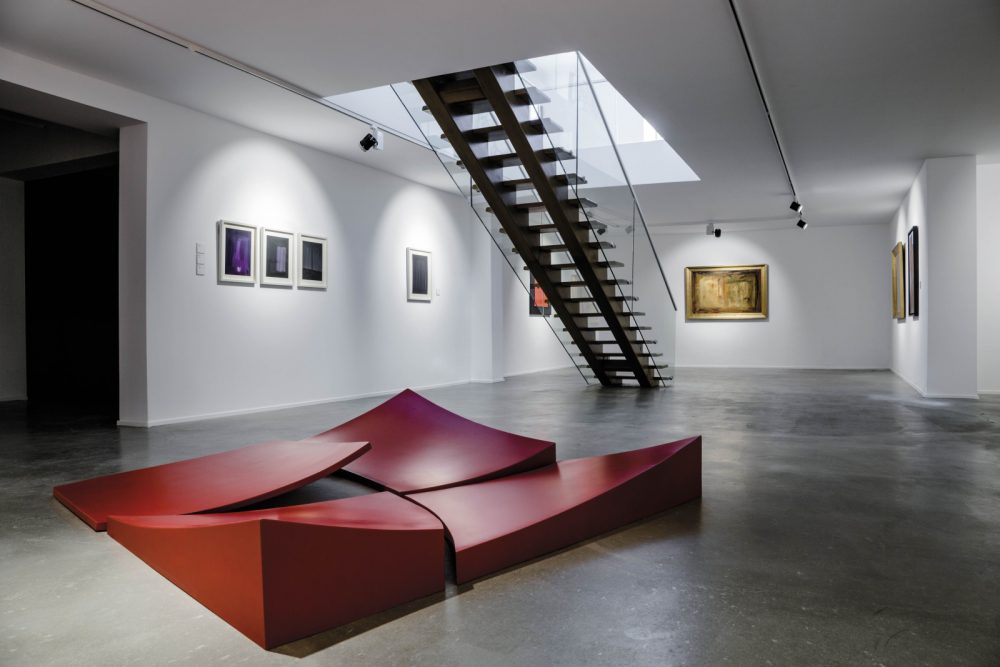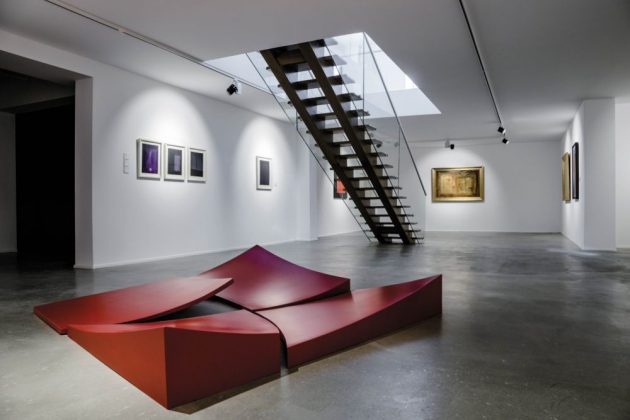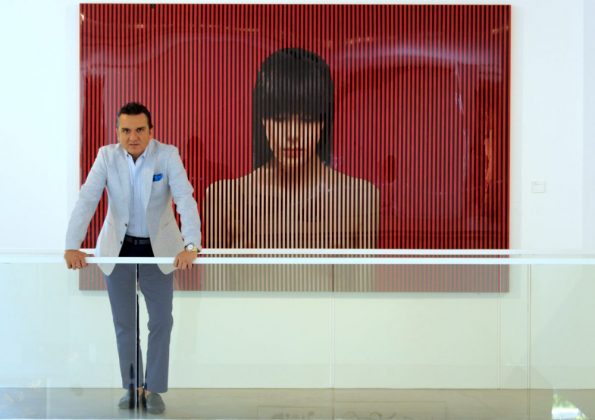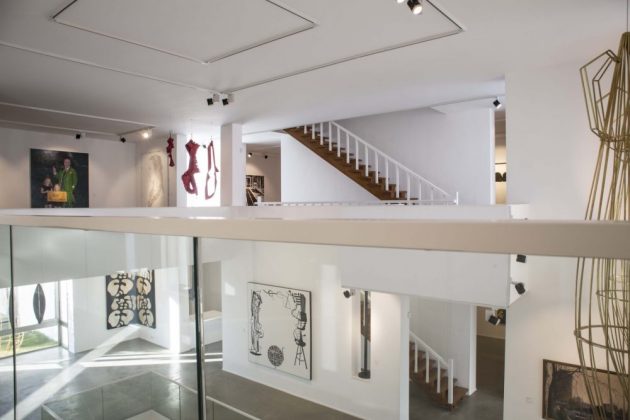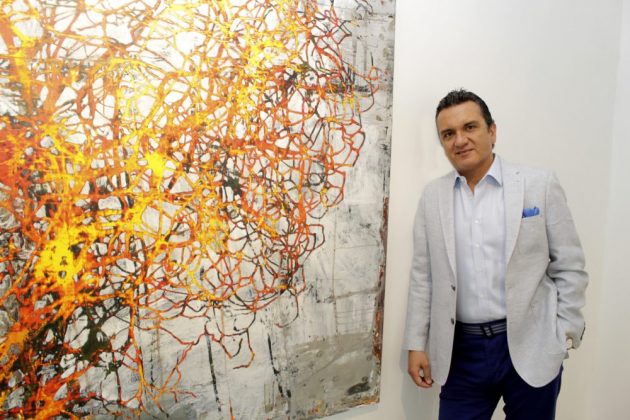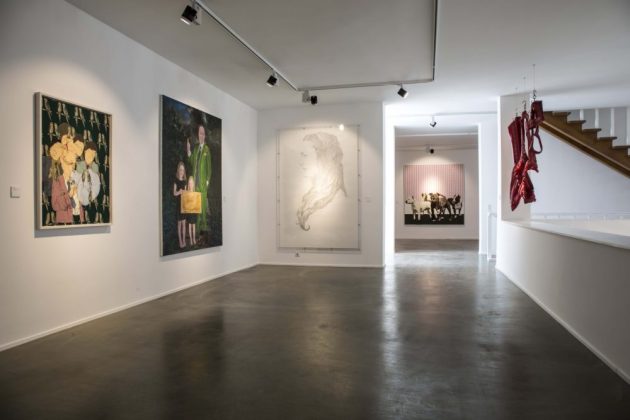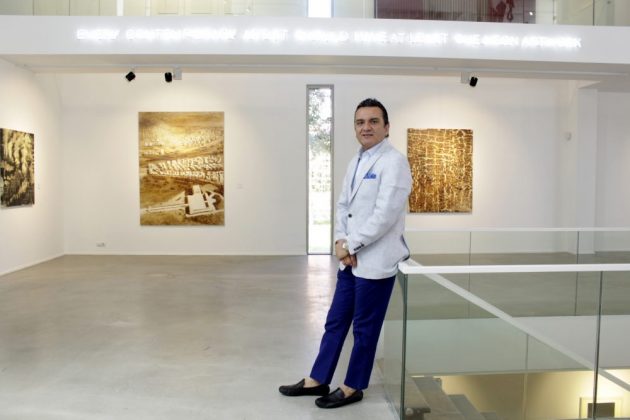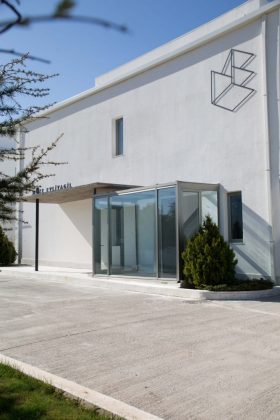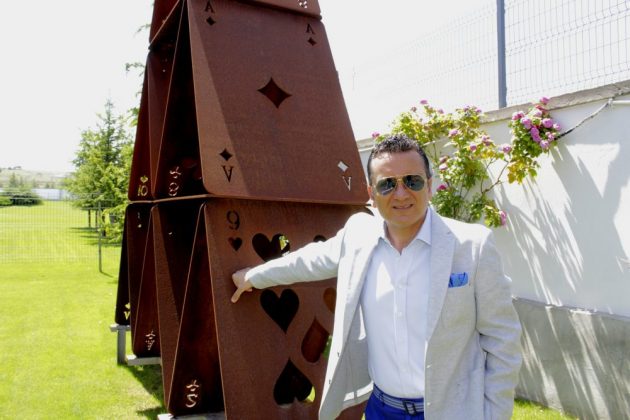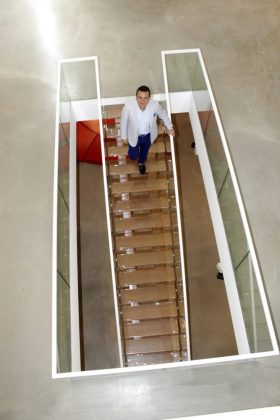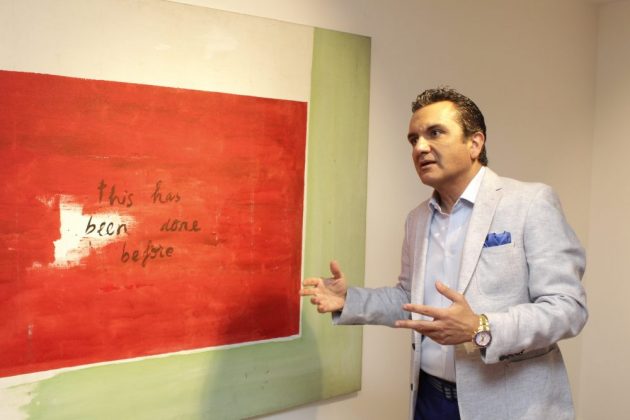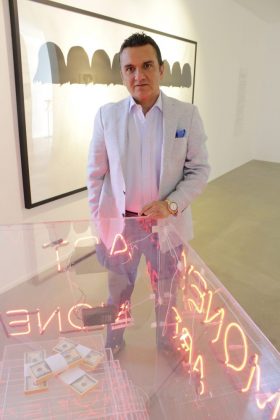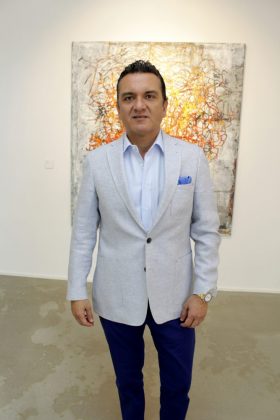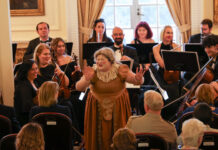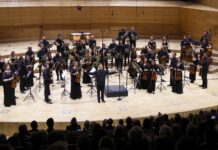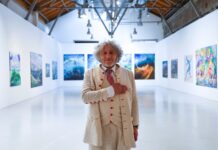Sarp Evliyagil is part of the newest generation of the Evliyagil family, known for the establishment of the largest and most up-to-date printing house in Ankara when no printing house existed. Sarp Evliyagil is a well-known businessman, and is somewhat of a collector, displaying various family heirlooms and items he has collected at his museum in İncek, Ankara. Evliyagil, having long complained about the lack of a modern art museum in a city of 7 million people, decided that this could be overcome through private enterprise. Evliyagil speaks about art and the museum he has established to Démarche readers.
How did you become a collector?
I was born into the printing and publishing profession. Actually, this subject overlaps with contemporary and modern art. At those times, Ajans-Türk would print reproductions of works of art and gallery catalogs but was also responsible for the printing of postage stamps for the Postal Administration, and at the age of 6 – 7, I developed an interest in stamp collecting, fine art and painters’ exhibition catalogs. In 1993, the French Cultural Centre sponsored a series of exhibitions called Sans-Art, the catalogs, brochures and posters of which were printed by AjansTürk. I was deeply affected by this exhibition, and my adventure of collecting started in that period.
Since then, I have continued adding to my collection with my own budget. Being a collector does not always mean art; if you feel it deep inside, a collectible item can be any object or subject.
Why is it important for people to access contemporary art?
I believe and hope that the Western face of Turkish society will develop further. The modern Turkish community should be molded and shaped not only with contemporary art but with art in all its forms. At this point, modern and contemporary art contains political, inventive and instigating thoughts and exhibits these to society. That’s why I believe that Turkish people turn to the West, not to the Arabian Peninsula, as we are not oriental in terms of our contemporary art, or indeed art in general. This is my personal belief.
Following this perspective, students of TED College and the French Charles de Gaulle Lyceum undertake drawing courses alongside children aged 7–8 in our museum. After touring our museum, they make their own creations, inspired by the works they have seen in the museum, and in this way, they come to familiarize themselves with the artists. This museum and the works of art on display there leave definite a mark on their minds that they will be able to recall 30 years from now.
IDEA OF ORGANIZING A MUSEUM INSTEAD OF JUST HOARDING
How did you develop the idea of setting up a museum?
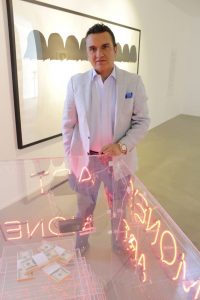 Frankly, I had no such intention, but first, my house, and then the walls and the storage areas in my office, and then the storage areas in my house filled up very quickly, and I was astonished to find that my collection had grown to 300–400 pieces. After a while, you start storing and stacking more and more pieces until you ask yourself “why am I doing this?” At home, I was able to exhibit no more than 30 – 35 pieces, and even if I replaced them constantly, it was not enough. These pieces had value as works of art both morally and materially, and the 400 pieces in the collection would soon rise to 500 with the budget I had set aside for the museum project. My pleasure of ownership could continue, but the works of art would still be kept in dark storage.
Frankly, I had no such intention, but first, my house, and then the walls and the storage areas in my office, and then the storage areas in my house filled up very quickly, and I was astonished to find that my collection had grown to 300–400 pieces. After a while, you start storing and stacking more and more pieces until you ask yourself “why am I doing this?” At home, I was able to exhibit no more than 30 – 35 pieces, and even if I replaced them constantly, it was not enough. These pieces had value as works of art both morally and materially, and the 400 pieces in the collection would soon rise to 500 with the budget I had set aside for the museum project. My pleasure of ownership could continue, but the works of art would still be kept in dark storage.
Could you tell our readers about the Evliyagil family that gives its name to the museum, and also about your collection in the museum?
My father Şevket and my uncle Necdet Evliyagil moved from Istanbul to Ankara in 1951 and established Ajans-Türk as the largest and most modern printing house in Ankara, there being none previously. In 1967, they earned a place in the Guinness Book of Records as the first printers of relief-type postal stamps, using a technique they had developed themselves. I wanted to use the name Evliyagil as the name of my collection, as it is a family collection and I wanted our family name to be carried forward through art. The collection includes three or four works of art that are part of the family heritage, while the rest is composed of artworks I have personally gathered. In general, similar collections that can be found around the world also carry family names.
What does the Evliyagil Museum mean to you?
In time, I have come to understand the need to share this collection with others, especially art lovers, and the only way to do this is to exhibit them. Although in only a limited way, I wanted to add something to the pleasure of art lovers, and on Saturdays and Sundays, about 30 or 40 people visit the Evliyagil Museum. We have no desire to make money from this endeavor, and so there is no entrance fee, and we also offer tea, coffee and even some snacks. All we want is for art lovers to come and visit our museum.
Presently, how many pieces are exhibited in the Museum?
There are around 75 to 80 pieces on display, although the collection includes some 300 works by 60–70 different artists, including old artists like Mubin Orhon and Ferruh Basağa, but also Kemal Önsoy and Canan Tolon, as young upcoming artists. The works of these people are exhibited according to a theme and are displayed on a rotating basis.
Which is the oldest piece in the Museum?
The works by Eşref Üren that date back to the 1950s, as well as works by Bedri Rahmi Eyüboğlu from the same period.
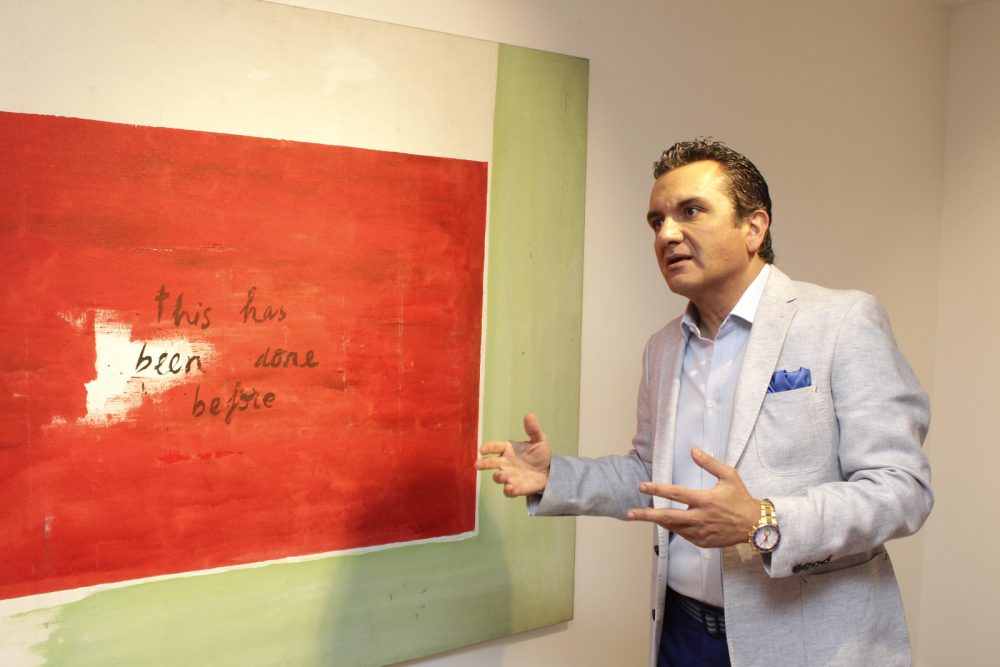
In the collection, is there any piece that you favor the most or any with a particularly interesting story?
This question is like asking, “Which of your children do you love the most?”, but I would say that the piece with the most interesting story would be the work of Erdal called “This has a Collector Touch”, meaning my own touch. Additionally, there is a fresco of Turkey by Neşet Günal that is on display outside of the museum depicting the industrialization of Turkey. It used to sit on top of the Ajans-Türk building in Kızılay, and rather than harming a memory in the city by dismantling it, I took a mold of it and had a replica made for the museum.
Is there any piece that you wanted but were not able to add to the collection?
Yes of course. For example, I love the works of Sabri Berkel, and in 2011 I tried to buy one of his works at an auction, but I lost. I was obsessed with it and I would love to own it.
STATE CANNOT DO EVERYTHING
What is the value of the Evliyagil Museum to the art world in Ankara and Turkey, and to art lovers as a whole?
Evliyagil Museum can be considered special as the first private modern and contemporary art museum in Ankara, and although there is a State Painting and Sculpture Museum, it has been closed for years. Ankara is the capital city of 7 million inhabitants, and there is no museum – this is unfathomable. In Switzerland, the city of Basel, which is home to a mere 140,000 people, has some 20 museums of modern and contemporary art; while in Vienna, one can choose from some 15 museums of this kind. In this regard, one could consider Ankara not to be a city, but merely a town of 7 million inhabitants. Obviously, the state cannot do everything, but if the state does not or cannot provide certain things, for whatever reason, private enterprise should take on the responsibility. Even the existing Istanbul capital expecting to have support when it could get things done by itself. So what will they do? They must chip in and contribute to the country from their earnings. For me, establishing the Evliyagil Museum is as much as I can do. I believe also that art lovers, collectors and artists in Ankara should also be contributing. There is no point in serving the interests or investing in Antalya or Istanbul; if everyone approached the situation in this way, and if Ankara changed its standing, it would be wonderful. This is true for art and sports, as the situation is the same.
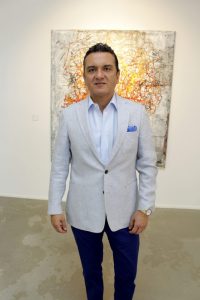
What difficulties are faced in establishing a collection?
Being a collector is a matter of character. After a certain time, if you are gathering items within a specific system, and if they are harmonizing with each other, it becomes a collection. It is not just picking up everything you see. The difficulty is that you begin an endless story in which the budget is limitless and the area is enormous.
PAST OF ANKARA IN THREE ERAS
Do you think the museum reflects the age in which we live?
Every exhibition is a separate world. The recent ANAKARA exhibition, established by curator Deniz Artun, refers to Ankara, and the collection was compiled based on the birth dates of the artists and in three main sections. ANAKARA is the first exhibition of Evliyagil Museum, in which 70 to 80 pieces from the collection are on display documenting Ankara’s past in three eras (Ankara as the Capital; the Early Years of the Republic; and the Aftermath) with various works of art. The lower ground floor houses pieces by older artists, or those who have passed away, and these works are paired with quotations from Yakup Kadri Karaosmanoğlu’s novel entitled Ankara. At the entrance level, Sevgi Soysal’s award-winning 1973 novel A Lunch Break in Yenişehir is paired with works of art from her era. Finally, the first floor contains literary pieces from two works by Bariş Bıçakçı, who draws attention to the abandonment of Ankara by artists who migrate to İstanbul, in that Ankara educates but cannot feed its own artists. If you cannot gain employment within state organizations, there is no private sector nor investors in Ankara to feed you. Each exhibition reflects its own world, re-establishing this world and then spreading it accordingly. In this way, ANAKARA exhibition reflects the world that I just explained.
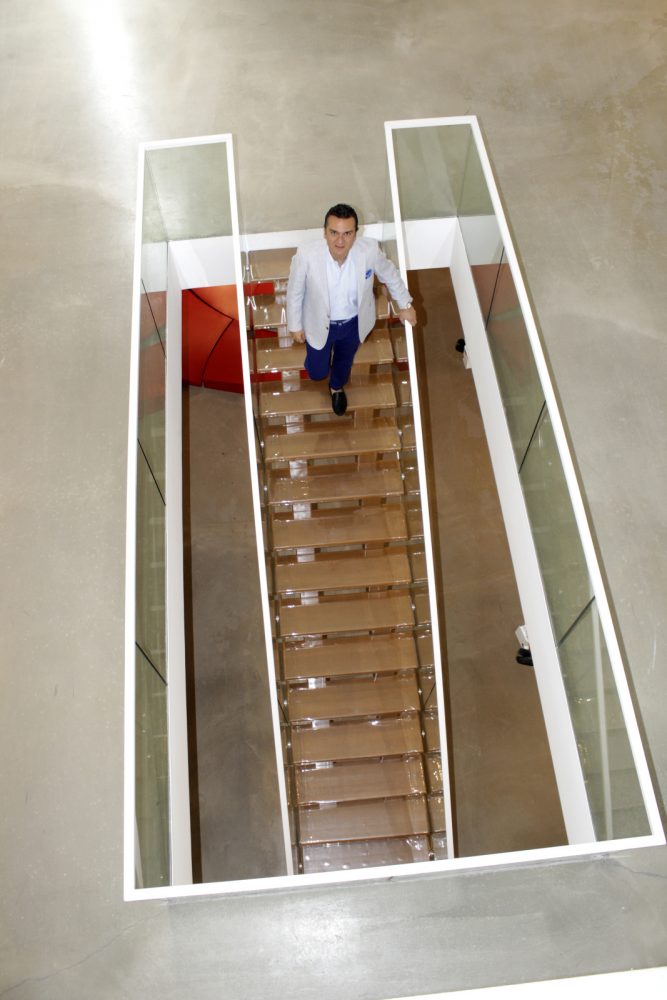
Do you exhibit only the works of Turkish artists?
In all likelihood, I shall exhibit the works only of Turkish artists for the foreseeable. I believe art and artists in Turkey must be supported, and it was my mission when I started out in this venture to support modern and contemporary art and especially young artists in Turkey.
Should anybody want to open an exhibition in your museum without your collection, what would be your criteria?
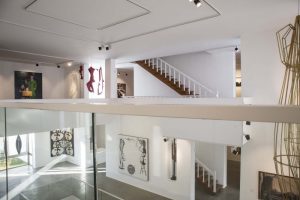 We have a small Advisory Committee composed of Deniz Artun, Can Akgümüş and myself. While we only exhibit pieces from our own collection, we would be open to including pieces from outside if those works collaborate and harmonize with our works. We have no intention of initiating a painting exhibition for a painter from outside. Evliyagil Museum is not an art gallery.
We have a small Advisory Committee composed of Deniz Artun, Can Akgümüş and myself. While we only exhibit pieces from our own collection, we would be open to including pieces from outside if those works collaborate and harmonize with our works. We have no intention of initiating a painting exhibition for a painter from outside. Evliyagil Museum is not an art gallery.
What would be your advice to people looking to start their own collection?
Primarily, they should decide what it is they want to collect. Having a subject is extremely important in the beginning. If one knows the theme or the subject thoroughly, one can develop more quickly. At the start, every collector develops a habit of gathering everything, but such an approach can make things complicated in the future. I would advise them to pick up nice items that appeal to their taste rather than buying everything they see.
Evliyagil Museum is open from 11:00–17:00 every Thursday, Friday, Saturday and Sunday.



